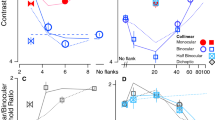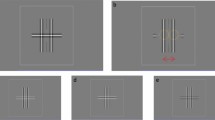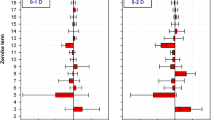Abstract
IN a recent communication bearing the above title1, we pointed out that with a particular anomaloscope the R/G ratio in the mixture required to match a narrow-band yellow depended on the viewing distance. Further work on more than forty normal observers has confirmed this effect, and also established the fact that the effect for each observer is substantially the same whether one eye is used or two eyes, as in the original investigation. Most observers required more green in the mixture the greater the viewing distance. Taking the R/G ratio a unity for an observer viewing an 18-mm. field at 60 cm. (subtending 2°), the ratio drops at a decreasing rate to an average value of about 0·85 at 300 cm. (20 ft.), beyond which there is little further change. The spread of results for different individuals is considerable, some observers dropping below 0·6.
This is a preview of subscription content, access via your institution
Access options
Subscribe to this journal
Receive 51 print issues and online access
$199.00 per year
only $3.90 per issue
Buy this article
- Purchase on Springer Link
- Instant access to full article PDF
Prices may be subject to local taxes which are calculated during checkout
Similar content being viewed by others
References
Nature, 160, 23 (1947).
Author information
Authors and Affiliations
Rights and permissions
About this article
Cite this article
HORNER, R., PURSLOW, E. Dependence of Anomaloscope Matching on Viewing-Distance or Field-Size. Nature 161, 484–485 (1948). https://doi.org/10.1038/161484b0
Issue Date:
DOI: https://doi.org/10.1038/161484b0
Comments
By submitting a comment you agree to abide by our Terms and Community Guidelines. If you find something abusive or that does not comply with our terms or guidelines please flag it as inappropriate.



